through January 20, 2013
High Fiber: Recent Large Scale Acquisitions in Fiber
Racine Art Museum
Racine, Wisconsin
High Fiber transforms RAM’s largest gallery space with larger-than-life size sculpture by significant contemporary artists who have established reputations working with fibers such as fabric, metal wire, and cedar. Created with techniques like weaving and knotting––and touching on a variety of subjects including metaphysics, the human condition, and the natural world––the works featured in this exhibition delight the eye and engage the mind. The artists whose work is included are: Nancy Hemenway Barton, Carol Eckert, Françoise Grossen, Jan Hopkins, Michael James, Ruth Lee Kao, Nancy Koenigsberg, Gyöngy Laky, Rebecca Medel, Linda Kelly Osborne, Barbara Lee Smith, Jean Stamsta, Merle Temkin, Dawn Walden and Claire Zeisler. For more information, call: 262.638.8300 or visit: http://www.ramart.org/sites/default/files/userfiles/exhibitions/2012/HighFiber/High Fiber Notes.pdf.
opened January 12th
Green from the Get Go: International Contemporary Basketmakers
Edsel & Eleanor Ford House, Visitor Center GalleryGrosse Pointe, Michigan
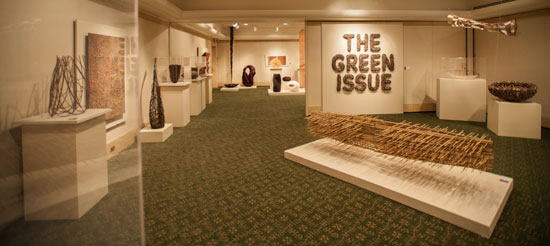
Green from the Get Go: Contemporary International Basketmakers installation at the Edsel & Eleanor Ford House, photo by tom grotta
Green from the Get Go: International Contemporary Basketmakers, curated by browngrotta arts and Jane Milosch, former curator of the Renwick Gallery, Smithsonian American Art Museum, opens at the Visitor Center Gallery of the Edsel & Eleanor Ford House in Grosse Pointe, Michigan and runs through March 9th. The Edsel & Eleanor Ford House is at 110 Lake Shore Road, Grosse Pointe, Michigan, 48236. Hours are 11 a.m to 5 p.m. Tuesday through Sunday. For more information call: 313.884.4222 or visit: http://www.fordhouse.org/calendar.html?month=&year=&cat=&cid=8691.
opened January 12th
Aleksandra (Sasha) Stoyanov: Warp and Weft Painting
Tefen Open Museum
P.O.B. 1
Migdal Tefen, Israel 24959
Art Gallery: 04-9109613; Visitors Department: 04-9872022; 04-9109609
The Tefen Open Museum exhibition features a large grouping of Stoyanov’s painterly weavings, whose subjects feel like dream fragments or half-forgotten memories. There is a catalog for the exhibition, which is open through August 2013, http://store.browngrotta.com/aleksandra-sasha-stoyanov-warp-and-weft-painting/. It features an essay by Davira Taragin and will be available through browngrotta arts. Stoyanov’s work, From the First Person – Number II, has recently been added to the permanent collection of the Metropolitan Museum in New York.
opening January 17th
Lenore Tawney: Wholly Unlooked For
University of the Arts
Rosenwald-Wolf Gallery
Philadelphia, Pennsylvania
The University of the Arts presents an exhibition by late artist Lenore Tawney (1907–2007), a leading figure in the contemporary fiber arts movement. Presented in conjunction with the Lenore G. Tawney Foundation, the exhibition, which runs through March 2nd, will feature her paper-focused pieces. For more information, visit: http://www.uarts.edu/.The Maryland Institute College of Art, Tawney’s alma mater, is hosting a complementary exhibition, http://www.mica.edu/News/Multi-Venue_Exhibition_Honors_Legendary_Fiber_Artist_Lenore_Tawney_H92_(1907–2007)_This_Winter_.html under the same, title featuring her line-based objects.
Opening Reception: January 24, 5 – 7:30 p.m.
University of the Arts
Rosenwald-Wolf Gallery
Philadelphia, Pennsylvania
Panel Discussion: January 24, 2 – 4 p.m.
The Legacy of Lenore Tawney
University of the Arts
CBS Auditorium, Hamilton Hall
Panelists: Jack Lenor Larsen: dean of Modern Textile Design, founder of LongHouse, Honory Doctorate, University of the Arts; Kathleen Nugent Mangan: director of the Lenore G. Tawney Foundation; Dr. Suzanne Hudson: assistant professor, University of Southern California; Warren Seelig: artist, distinguished visiting professor, University of the Arts; Moderator: Sid Sachs: director of exhibitions, University of the Arts.
opening January 22nd
MFA Book Arts and Crafts/Fibers Exhibition
Gallery 224 & President’s Office
University of the Arts
Philadelphia, Pennsylvania
This exhibit features work by University of the Arts students in the MFA in Book Arts/Printmaking and Crafts/Fibers programs, who have each created a piece in response to Lenore Tawney’s work. The students researched an extraordinary collection of objects from the Lenore Tawney Foundation, including old books and parts of old books, wood containers, small bottles and thread, which they incorporated and used as inspiration for their exhibition pieces. The exhibition runs through February 8th. For more information, visit: http://www.uarts.edu/.

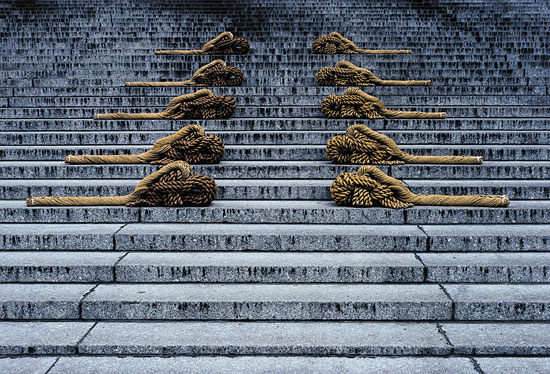


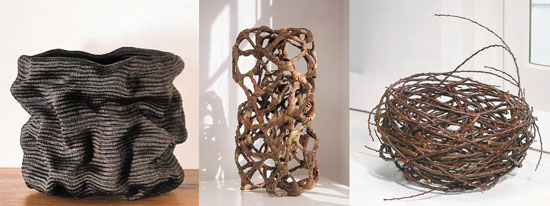



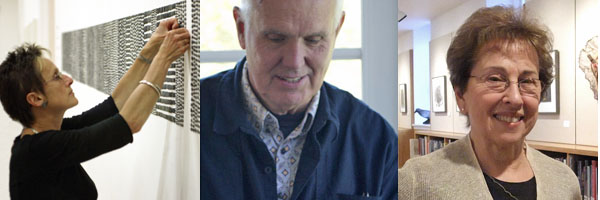
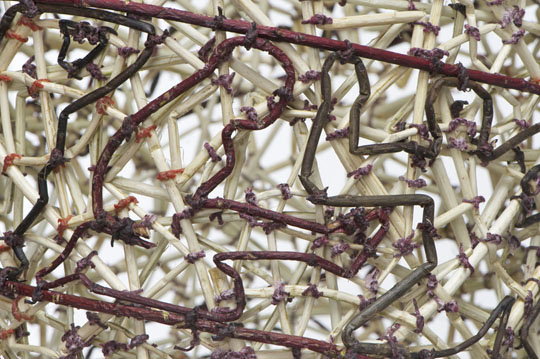
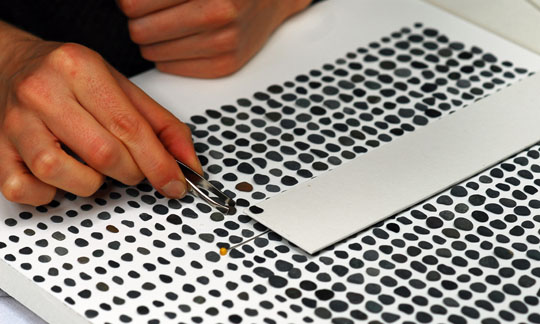
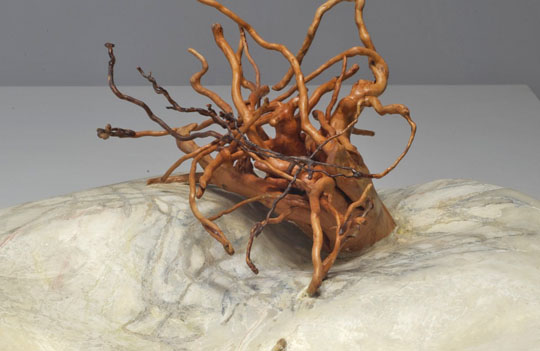
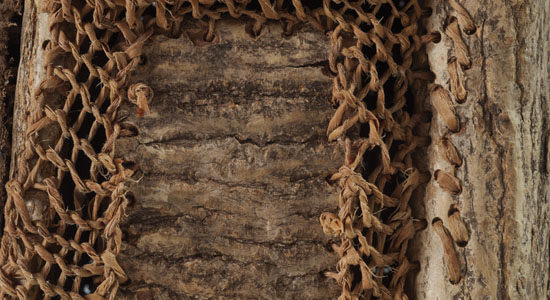
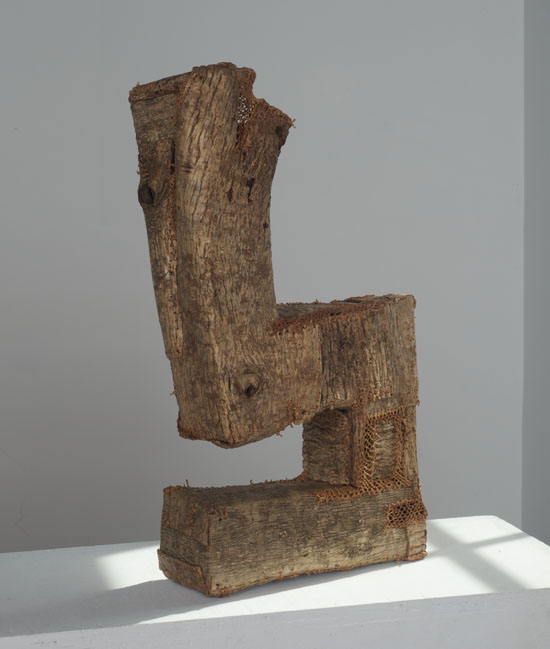
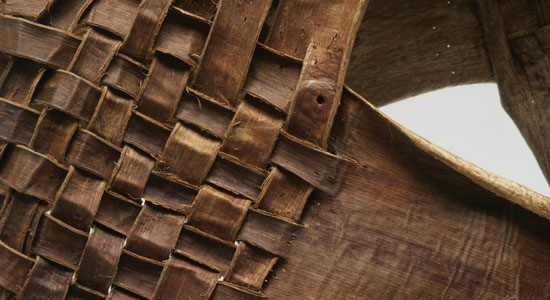
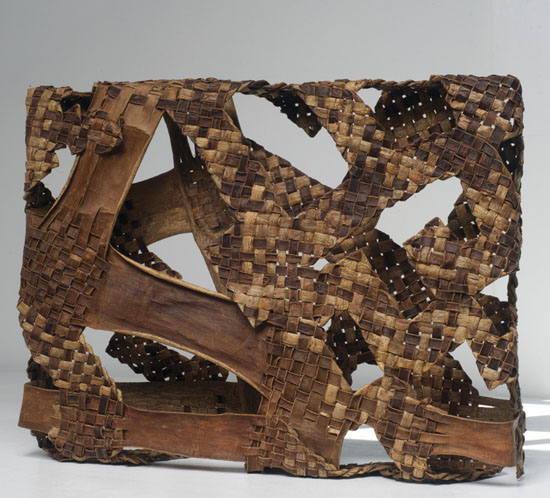
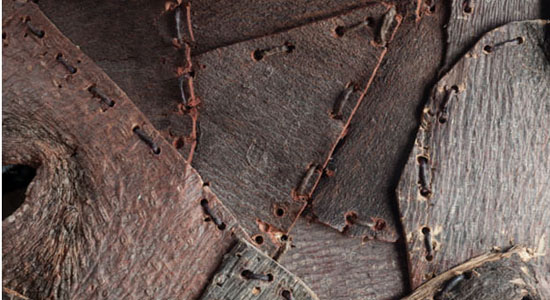



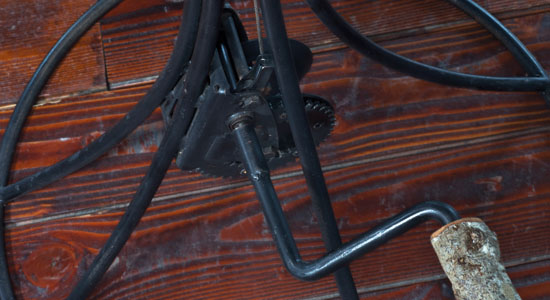


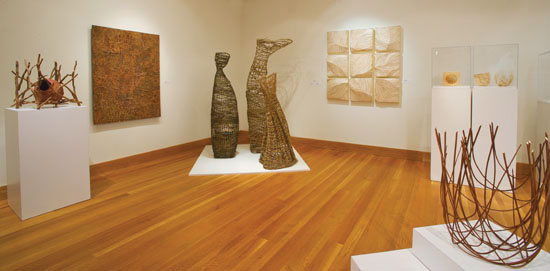

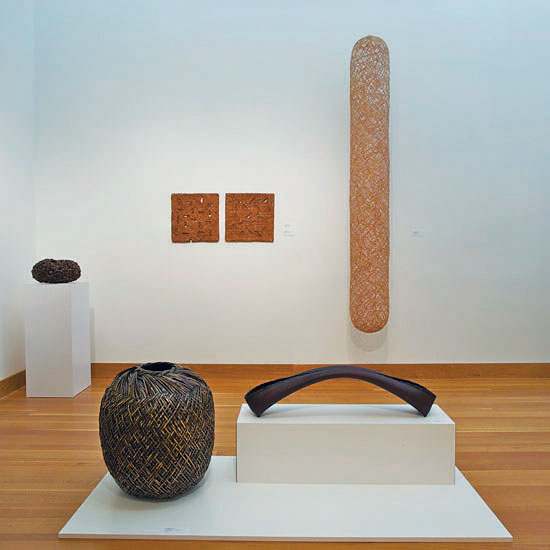
Update: Chris Drury’s Carbon Sink Creates a Dialogue
In a previous blog, we wrote about Chris Drury’s Carbon Sink, an installation at the University of Wyoming that garnered the ire of local legislators who viewed it as a poor educational investment. Chalk one up to transformative power art. As you can see from the editorial below, by Wyoming State representative, Tom Lubnau, in the Gillette News Record, (where Rhonda used to live) the controversy led to a valuable dialogue about art, education, energy and the environment http://www.gillettenewsrecord.com/stories/Trying-to-make-silk-purses-from-sows-ears,61404. Here’s also an image of Chris Drury’s most recent Wyoming-inspired art work, On the Ground: Above and Below Wyoming.
topographical map woven with a Geological map of the state. The border is coal dust and Wyoming earth. The pattern is wind blowing off the Rockies. Size: 3’4″ x 4’1.5″
Trying to make silk purses
from sows’ ears
Tom Lubnau
Gillette News Record, September 6, 2011
A few weeks ago, the University of Wyoming unveiled a new on-campus sculpture entitled “Carbon Sink.”
The artist, Chris Drury, is a worldfamous sculptor, the university paid $40,000 to install the sculpture on campus. The artist designed the sculpture as a series of dead logs arranged in a spiral pattern, which he hoped would symbolize the death of forests from pine beetles due to global warming.
On the Ground: Above and Below Wyoming Detail by Chris Drury
Much has been written by journalists, bloggers and in some tersely worded emails about the comments Reps. Gregg Blikre, Norine Kasperik and I made about the hypocrisy of accepting dollars derived from carbon fuels to put up an anti-carbon sculpture. People, mostly from California and New York told we told us we should be “ashamed of ourselves” and that we are “ignorant bumpkins because we hate anything that resembles culture” and referred to us as “cow flops and road apples.”
It is important to understand what we didn’t do. We didn’t ask the sculpture be taken down. We didn’t take any steps to remove funding from the university. And we didn’t engage in any form of censorship. What did we do? We defended our friends and neighbors. Prompted by the existence of the piece of art, we started a discussion. My old art teachers, from back in the day, told me that art was supposed to provoke discussion, to inspire and to affect the viewer.
And that is what we did. We used the existence of the art as an inspiration piece to let folks know that between 60 and 80 percent of the state’s budget is dependent on extractive industries. We asked for some appreciation and kudos for the hard-working folks in the energy industry, who go to work day after day, meeting America’s energy needs and funding in large measure the University of Wyoming budget. We told the university that we thought it was out of touch with the rest of the state, and that we wished they would spend as much time working with us to meet our educational needs as they did being critical of the industries that pay the bills in Wyoming.
And to their credit, the administration of the University of Wyoming listened. We engaged in a dialogue about the misunderstandings, misperceptions and missed opportunities that exist between the University of Wyoming and Campbell County. University President Dr. Tom Buchanan, Trustees Warren Lauer and Jim Neiman, and senior UW staffers Don Richards and Mike Massie took time out of their busy schedules to travel to Gillette, to tour a power plant, the college and other community facilities, and to meet with community leaders and energy company officials to discuss opportunities for UW to offer educational services in the Campbell County area.
Carbon Sink University of Wyoming
The discussions were positive. Dr. Buchanan left the citizens of Campbell County with a clear challenge. If we can define a specific set of needs that can be met by the university rather than a vague list of complaints, the university will work to meet those needs. The monkey is now on the backs of the citizens of Campbell County. We have a great opportunity to advance the education opportunities and the quality of life in northeastern Wyoming if we are wise, and if we can specifically define our needs and put a plan in place to accomplish those needs.
Thanks to Chris Drury for your sculpture. While I don’t agree with your science, or what you believe your sculpture symbolizes, the burnt logs laying in a circular pattern on the grounds of the University of Wyoming were a catalyst to open discussions on a greater UW presence in Campbell County. Art prompted discussion. If we accept the challenge, discussion will lead to better education and an enhanced quality of life.
Rep. Tom Lubnau represents Campbell County. Rep. Gregg Blikre and Rep. Norine Kasperik of Campbell County also joined with him in signing this opinion piece. (reprinted with permission).
For Chris’s views and more on the controversy, visit his blog: http://chrisdrury.blogspot.com/2011_09_01_archive.html.